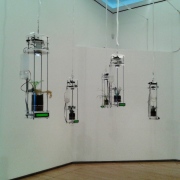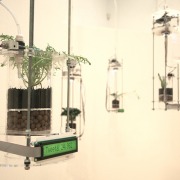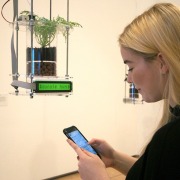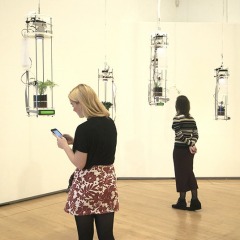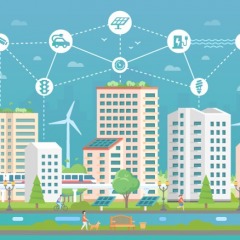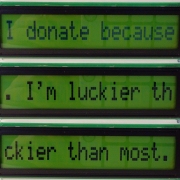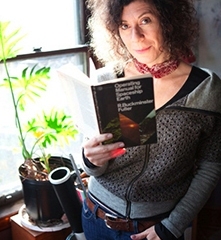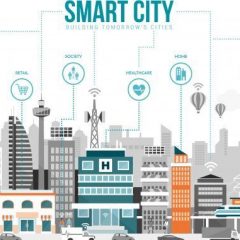In this new era intelligence, necessity and efficiency are the ingredients for the recipe of happiness. Stephanie Rothenberg discloses a utopian illusion and proposes a new system for prosperity and wellness.
Today many architects and the world of architecture in general are focusing on a rising phenomenon: Smart cities. Nowadays the city has to evolve with precise characteristics in order to be efficient, innovative, eco-friendly, digital and inclusive. Just in a world they must be smart. Day by day we attend the challenge to make cites smarter. Every day we try to realise smart cities as much as possible to concretise an ideal which became an international theme over time. Who wouldn’t live in a place that can satisfy our needs? A place which can offer efficiency but also comfort and well-being and at the same time it can preserves planet. A forbidden dream of this century is the desire to research comprehension, perfection, attention and also the necessary intelligence for a similar operation. Smart cities are groups of urban planning strategies to optimize and innovate public services in order to relate physical infrastructures of cities «with the intellectual, social and human capital whose live in them»¹. We can talk also of “smart art” and we can analyse Stephanie Rothenberg’s artwork: Planthropy, exposed in the Lowry Gallery in Manchester in 2015. It’s clear that there is a deep connection between technology, artificial intelligence and sustainability. Transparent vases hung on the ceiling of the white room, inside of these vases there are newly born little sprout and green leaf of plant already grow. They wait to be irrigated with water that came out only if a Twitter user decides to donate trough the social. The system is easy but very ingenious; it reveals the gap between action and will and between intention and desire. The ease of donation trough the social allows more accessibility to a large number of people. Moreover it entails immediacy, spontaneity and instability which are the main characteristics of the new system. The vision of life which is in continuous transformation moves deeply and stands out the beauty of Rothenberg’s project, which not only has a didactic purpose but also catches the visitor successfully overcoming its limits, a fact that we shouldn’t underestimate. Plant growth is directly proportional to donation and the implied responsibility of the user in the cause; who is in the spotlight and responsible of their fate. This mechanism becomes aware people to essential themes, such as sharing, generosity, preservation of life, nature and humanity. The relationship between cause and effect is fundamental for the achievement of the experiment and its realisation. First of all it’s necessary to destroy our own certainties and opinions in order to close to a deep and laden system extensively stratified. “I think” and “I believe” are no longer enough to justify what happens. We have to be ready, to change, to listen, to go beyond and focusing on the subject and not only on the background. Only in this way we can see farther, not with eyes but with something of more forward-looking. This process is what happens in smart cities. Smart data improves social well-being paying attention to community needs. In the same way art finds the ethical element as a leading role. Not more “Art for Art’s sake” as said Oscar Wilde in XIX century, during the Aestheticism, but art as a main instrument for an ethic and ontological reflection, which induce to a real and important change in the world. It stimulates sleeping and sluggish consciences. Nowadays it is impossible to image an art which doesn’t take into account urgent problems in the contemporary society, projected towards its decay and end. In this framework Planthropy behaves as a barrier of protection against physical and ethical decay. The connection between the emotional and the digital element trigger an empathy process, which converges to the interactive system reaching the same point from where it has been originated. This is the real turning point which differentiates smart cities from Stephanie Rothenberg’s artwork. Smart cities and all their tangles and connections like computers act without awareness and with an accurate precision, they execute their assignment satisfying any desire without ask a question. With this consideration we can image an extreme vision where this system can provides dangerous instrument to cause damage very easily to other people or yourself. Indeed we have only to execute orders, don’t we? In this framework Smart cities lose their allure and they became terrible in their idyllic perfection, actually they can be destructive. There aren’t awareness and good sense typical of human nature in this imaginary setting. Developed artificial systems and machineries can’t take human mindset’s place. This is the exactly problem that we see with artificial intelligence in robotic field. Do you remember the film I, Robot? It’s interesting to notice how in two parametric systems in which are configured similar entities perform symmetric tasks. Donator and machine’s active action produce two different effects; even though they execute in different moment an action that is reflect in the same leading aim (make world a better place, improving way of life and life itself). In the first case it’s empathy to rouse the mechanism in order to care about indifference through compassion, by changing the essence of life. While in the second case, citizen’s selfish desire would realise all his wishes but without a real value. We don’t know if the system that feed smart cities is correct to follow. What we need is to take into account new possibility and to concentrate not only on our needs but also on other people. Only in that moment the real revolution will arrive. As Albert Einstein said <<the measure of intelligence is the ability to change.>>;² Maybe it’s true; we must have the courage to change and to not stop to utopian structures, even if they are smart. We must not focus on a unique form, but we have to be ready to explore limitless forms, with their possibilities because at the end the unpredictability of future looks impossible to last over time and to disturb wars that seem endless.
Translated into English by Alice Petri.
¹ Smart city, Wikipedia, www.wikipedia.org, date of consultation 18/07/2019.
² Albert Einstein, Liberiamo.it, www.liberiamo.it, date of consultation 25/07/2019.


